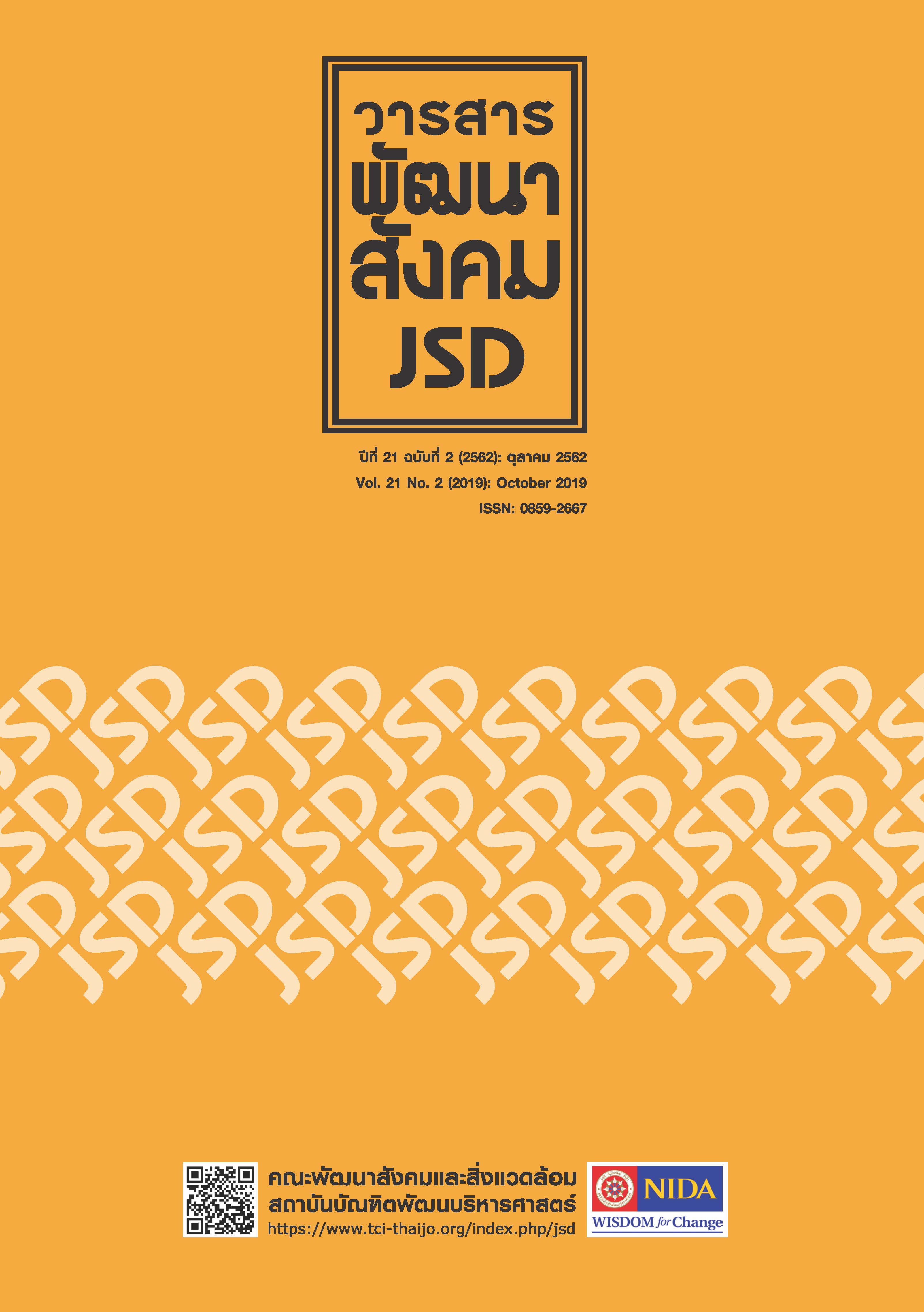Developing Strategies for the Retailers along Thailand-Cambodia Border Crossing Points
Main Article Content
Abstract
This research found that the same problems of the retailers at Chong Sa-Ngam and Chong Chom permanent border crossing point markets were: 1) market areas, 2) retailers and 3) customers, while the different problem was the products. The same needs of retailers were: 1) allowing agencies to organize to be permanent market space and2) arranging systematic infrastructure and continuous management. On the other hand, the different needs of retailers were: 1) encouraging Thai customers to buy more products, 2) not increasing rental space fees, 3) providing responsible persons for markets clearly and product safety, 4) being flexible in law enforcement of Thai officials and 5) collecting taxes of Cambodian officials systematically with standard. Moreover, the limitations of retailers were different in two areas. The limitations at Chong Sa-Ngam permanent border crossing point were: 1) retailers had low investment budget, 2) market areas couldn’t be driven full potential, 3) markets were very far from the permanent border crossing point, 4) trading days were specified and 5) rental fee of market areas at Cambodian side was increased every year due to belonging to capitalists. Next, the limitation at Chong Chom permanent border crossing point was a government policy that controled copyright products and the FDA. The potentials of retailers at Chong Sa - Ngam permanent border crossing point were: 1) retailers communicated well in both Thai and Khmer languages and 2) there was no entry fee on specified trading days. Besides, the potentials of retailers at Chong Chom permanent border crossing point were: 1) retailers had high investment budget, 2) Cambodian and Thai customers trusted in products quality of Thailand and 3) there was trading every day. Furthermore, the seven developing strategies for retailers at Chong Sa - Ngam permanent border crossing point are: 1) to promote retailers to communicate in Khmer and Thai languages for trading, 2) to create relationships at provincial level of both countries as continuous trading partner cities, 3) to link up transportations to be flexible, 4) to provide trading areas near the border crossing points, 5) to allow local authorities to manage the market, 6) to promote product diversity and 7) to support local potential of retailers. The three developing strategies for retailers at Chong Chom permanent border crossing point are: 1) to encourage retailers to study international trade regulations and laws, 2) to establish market structure systematically and 3) to control over payment system clearly. However, the policy proposals for relevant agencies on the development retailers are differences. The policy proposals for Chong Sa - Ngam permanent border crossing point are:
1) to promote local agencies with standard area management, 2) to promote concrete border integration mechanisms, 3) to strengthen international relationships at local level along the borders and 4) to promote local retailers to be competitive. On the other hand, the policy proposals for Chong Chom permanent border crossing point are: 1) to promote public relations of border trading market to boost up economy, 2) to encourage retailers to learn Khmer and Thai languages more and 3) to promote better Thai - Cambodian relationships in both government agencies and local communities.
Article Details
References
Chong Chom Customs House 2012. 2012 Annual Report. Surin Province.
Khamphet, J. (2003). Cultural relationship on Thai – Laos border.Ubon ratchathani: Ubon ratchathani University.
Khanrak, M. (2015). The development of market on the border trade of Thai – Cambodian the case study of Chong Chom Checkpoint. Bachelor of Business Administration, Faculty of Business Administration, Khon Kaen University; Nongkhai campus.
Khuannej, J. & Aorachun, C. (2013) Trade cooperation between Thai – Cambodia the case study of Trat – Koh Kong Island. Bachelor of Political Science Program, Faculty of Humanities and Social Sciences Rambhai Barni Rajabhat University.
Klinsrisuk, K. (2002) The research report on potential and possibility of trading along the border in northeast provinces. Nakon Rachasrima: Suranaree university of technology.
Kongthong, J. (1997). Influence Factors for a tourist who travel to Chong Chom Checkpoint, Kap Choeng district, Surin Province. Master’s degree thesis department of geography, Graduate school Mahasarakham University.
Matien, N. (2006). Trade history of Thai – Cambodia border Srakaew province (1975 - 2003). Master of Education department of history Srinakharinwirot University.
Nongku, A. (2007). The Trade strategy of border trade Thai – Cambodia: The case study of Srakaew province. Faculty of Economics Sripatum University Bangkhen campus.
Sali, B. (2010). Adaptation of Khmer people along Thai – Cambodia border and the implicit of land administration of Thai government case study: Chong Chom border Checkpoint, Surin province. Bangkok: The Thailand research fund.
Samaikul, M. (2014). The development of economics on border trade: the case study of Midtrapharb market at Thai – Cambodia border. Master of Education in Development Education Silpakorn University.
Sangsok, S. (2013). Casinos in Chong Sa-ngam – Chong Jogjuam, Al longwang Disrict, Udon Mechai province, Cambodia and influences on gambling habit of local people. Department of gambling research. Thai Health Promotion Foundation (THPF.).
Siriphong, S. (1994). The study of development on planning along borders: the case study of Thai – Laos border in Loei province. Master’s degree thesis, Chulalongkorn university.
Srikham, W. et al. (2014). Invasion and changing landholder in Chong Chom market, Karbcheng district, Surin province. Department of Social sciences Faculty of Liberal Arts, Ubon ratchatani University.
Sukphan, S. (1994). Border trade and the sustainability of the country: case study of Prajeanburee province. Master’s degree thesis Faculty of political sciences graduate school Chulalongkorn University.
Wongwittayaphanit, S. Rojprasertkul, J. and Soisordsri, S. (2011). The development of border trade: The case study of Rongkluea market, Srakaew province. Thai Health Promotion Foundation.


